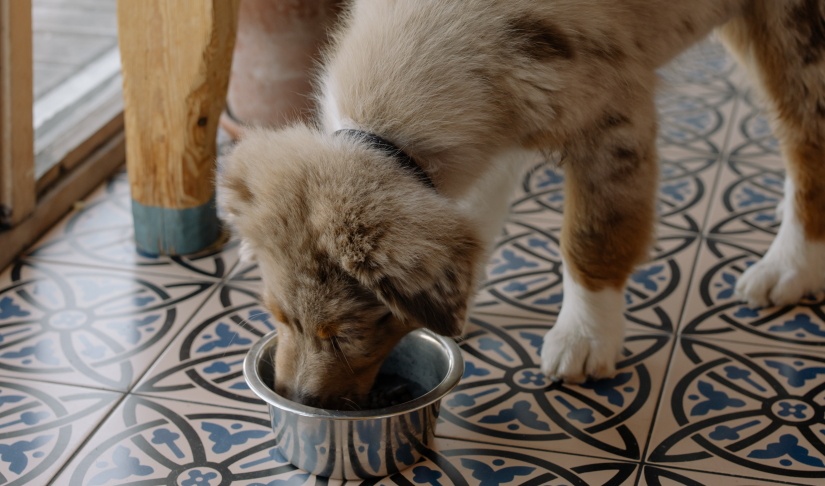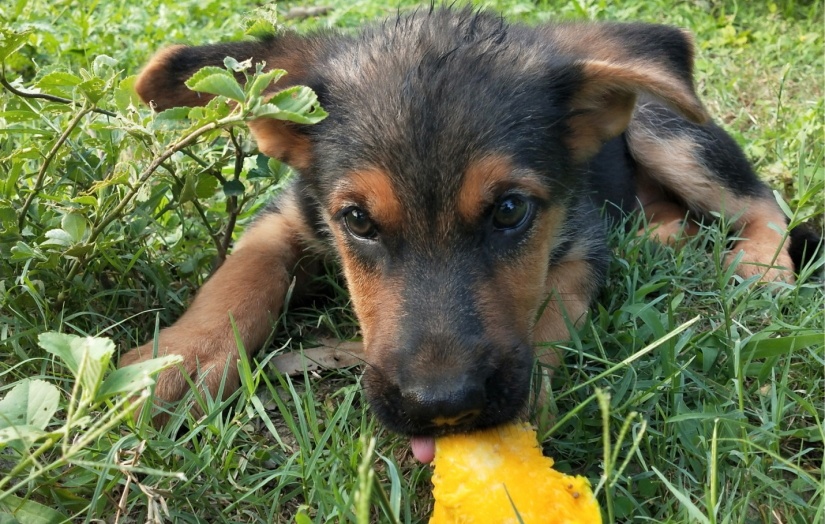Mangoes are a delicious and palatable fruit that is enjoyed by people all around the world. But can dogs eat mango?
If you are wondering whether to give your dog a piece of mango from your plate, then rest assured, yes, you can give mangoes to your puppies as a treat or even a healthy snack. However, do make sure your dog is not allergic, and make sure you remove the skin and pit before giving mangoes to your dog.
Nutrients in Mangoes
Mangoes are packed with most of the nutrients required for a healthy diet in dogs. These include:
Vitamin A
Vitamin A is an essential nutrient for preserving good eyesight. It prevents eye problems such as night blindness, dry eyes, and cataracts.
This nutrient is also necessary for the proper functioning of lungs, kidneys, and liver and aids in the growth of a healthy haircoat.
Antioxidants
Antioxidants are organic chemicals that aid in strengthening your dog’s immune system. They offer protection against skin infections, allergies, progressive ailments, and even a few types of cancers.
Protein and Potassium
Mangoes are a good source of protein and potassium. Protein aids the growth and repair of body tissues, whereas potassium helps the proper functioning of muscles and the nervous system.
Dietary Fiber
Dietary fiber is an essential component for the smooth working of your doggy’s digestive system. It prevents digestion problems such as constipation and diarrhea.
Can Mangoes be Harmful to Dogs?

Mangoes are packed with many nutritional benefits; however, there are specific circumstances that you must keep in mind, which make it prohibited for feeding your doggy mangoes.
Underlying Medical Conditions
If your doggy suffers from medical conditions such as diabetes or pancreatitis, then it’s required to follow a strict diet plan for its good health. Communicate with your vet before making any changes in the diet.
Feeding Mangoes Without the Skin Removed
For dogs, it can be difficult to digest the skin of the mango, leading to stomach upset, or can even cause choking. Thus, it’s recommended not to feed your pet mangoes with the skin on.
The mango peels also consist of an organic chemical called urushiol, an irritant that can be commonly found in poison ivy or poison oak. Prevent your dog from coming in contact with the mango’s skin, as it can result in skin allergy.
Mango pits
Mango pits are a choking hazard for your dog. Don’t feed mangoes that consist of mango pits, as they’re hard to chew and can even get stuck in the dog’s digestive tract, causing vomiting or diarrhea.
The seed also consists of a poisonous organic compound called cyanide which can be released by chewing. Never give your dog a mango seed as a snack.
Symptoms of Clinical Obstruction
If you’re doubtful whether your furry friend has swallowed a mango pit or the skin, keep a lookout for symptoms of blockage that include diarrhea, vomiting, reduced appetite, breathing complication, lethargy, and constipation. If any of the symptoms appear in your dog, don’t neglect, and seek veterinary treatment immediately.
Recommended Daily Intake of Mangoes for Dogs

Feed your doggy 1 ¼ of a cup of fresh mango once a week if it’s a small breed; otherwise, large breeds can be fed twice a week. The fruit consists of high amounts of sugar and calories; thus, it’s required to practice moderation.
Feeding your dog excess mango treats can be problematic. It can cause stomach upset and even lead to diarrhea as mangoes have high concentrations of dietary fiber. Thus, it’s recommended that mango snacks make up only 10% of a dog’s daily diet.
Not all dogs are comfortable with eating mangoes. Some can suffer from allergic reactions due to eating this fruit. To be sure that your pup isn’t allergic to mangoes, test by giving them small treats to check for any side effects.
Contact your veterinarian, who can give authentic information about whether your dog can eat mangoes and the quantity based on their medical history, weight, and size.
Precautionary Measures to Keep in Mind When Feeding Mangoes
- The first and most important step when preparing a healthy mango snack for your dog is to wash it rinse with water. This is required to remove dirt and chemicals that can be present on the surface of the mango.
- The next step is to peel off the mango skin as it’s difficult to chew and swallow.
- Take out the large seed of the mango as it’s a choking hazard for your doggy.
- Slice into bite-size portions for your canine friend. It’s best to cut it into small portions for smaller dog breeds, whereas bigger dog breeds can be given larger portion sizes.
DIY Mango Snacks to Give Your Doggy

Mangoes can be served in several ways to your doggy. You can peel off the skin, remove the pit, and chop the mango into bite-size pieces. These pieces can be dried to make a chewie and long-lasting treat. They can be packed within your pocket or handy bag without making a mess to give your dog while you’re outdoors.
Another way to offer this healthy treat is by making scrumptious mango popsicles. The ingredients required for this snack include 2 cups of fresh mango dice, a cup of coconut water if available or milk, and a tablespoon of honey.
First, start by peeling, slicing, and removing the pit of the mangoes. Next, make a smooth puree in a blender. Once you have a smooth puree, add the coconut water or milk, and blend it until mixed properly.
Finally, pour this mixture into ice popsicle molds and store it in the freezer overnight. Voila! You’ve made your doggy delicious mango popsicles which can be great for giving on a hot summer day.
Yes, You Can Give Mangoes to Your Dog

Mangoes are a sweet, nutritious, and juicy tropical fruit which can be enjoyed both by humans and their canine friends when given in moderation. If your dog hasn’t eaten a mango before, start by testing small amounts of mango snacks to check whether it likes mangoes or not. Keep an eye out for allergic reactions as well.
When making mango snacks, cut them into bite-size slices that are easy to chew and swallow. The skin should be peeled off, and the seed has to be removed to prevent choking hazards. If you fear that your pet has swallowed a seed or a peel, monitor your dog for symptoms of intestinal obstruction and contact your vet immediately.
Seek proper guidance from your vet when adding mangoes to your doggy’s diet to prevent any adverse effects on their health.
